Narrow path to safety: Car dependency threatens individuals
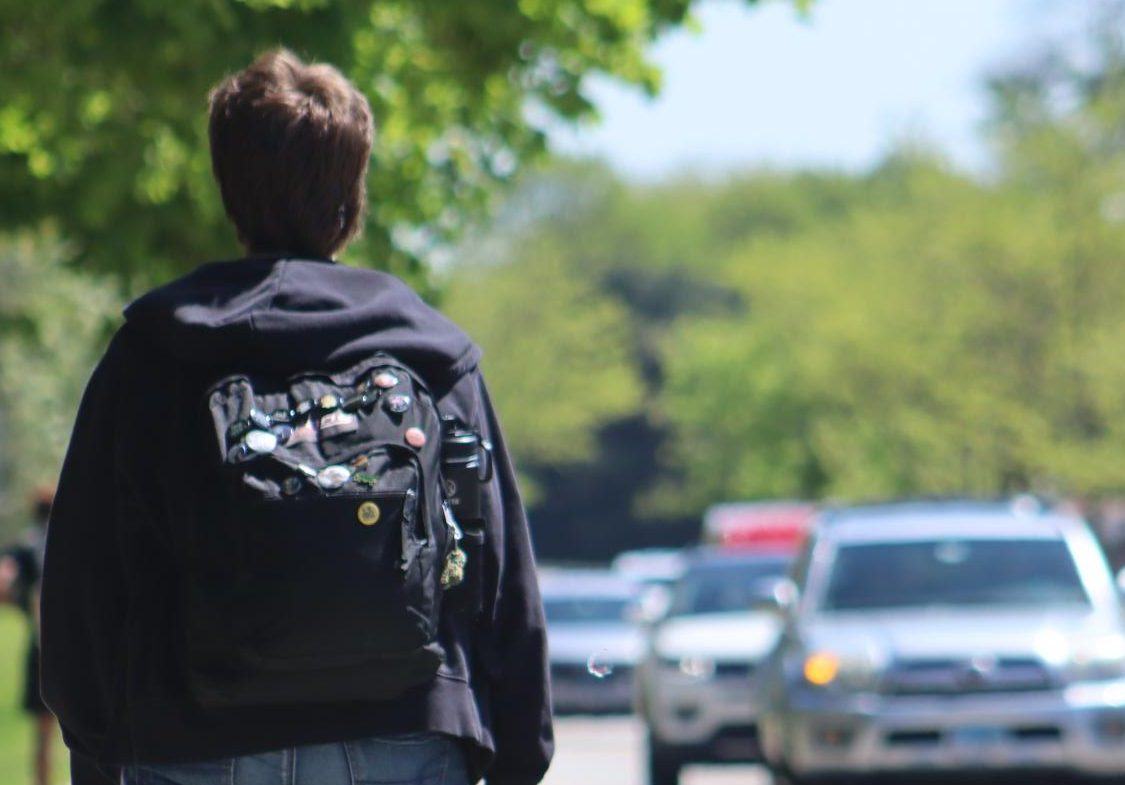
Cars roar past as students step onto a narrow gravel path just outside Metea Valley High School. There’s little to separate them from traffic—no curb, no buffer, barely even a sidewalk. The air is thick with exhaust fumes, the noise drowning out everything else. Along the road, there’s trash, broken metal, and remains of small animals that line the sidewalks. The message is crystal clear for those walking here: these streets weren’t made for people.
This road, like many others across suburban America, is the product of a system built for cars, not people. Urban planners call this “car dependency”: a condition where daily life, such as school, work, groceries, and social activities, is nearly impossible without a private vehicle.
“You have to plan everything around transportation,” said Bryan Ketter, a teacher at Geneva High School and a safe streets advocate. “Do I have a ride? Can I bike? It makes daily life so much harder compared to walkable communities, where people don’t have to plan their days around a car.”
Dr. Kate Lowe, a professor of Urban Planning and Policy at the University of Illinois, Chicago, agrees: “Car dependency is a system that makes it really hard to move around and reach important destinations without a private automobile.”
But this system wasn’t inevitable—it was carefully constructed.
The “American Dream” of suburban life, with its promise of comfort, space, and upward mobility, was sold alongside a vision of car ownership as freedom. In reality, it is an illusion—one built on policies and designs that made driving the only practical choice.
After World War II, federal investments and zoning laws fueled a massive expansion of the suburbs. Public transportation networks were removed or defunded, while neighborhoods, streets, and shopping centers were deliberately designed around cars, not people. Auto manufacturers and developers had a major influence on shaping this new way of life.
“It’s a bit of a chicken-and-egg situation,” said Ketter. “Did car dependency shape the suburbs, or did suburban design create car dependency?” In reality, it was both. As suburbs grew outward, they became harder and more dangerous to navigate without a car, locking people into a car-dependent lifestyle.
Over time, this pattern made driving the default, even when it wasn’t the most efficient or affordable choice. Walking or biking wasn’t just discouraged; in many cases, it wasn’t even an option. This is the essence of urban sprawl.
For many families, it’s about more than just commuting—it’s about time. Juggling everything from school pickups to after-school activities.“My dad used to take the train to Chicago,” said Judith Brodhead, an urban planner in Naperville. “But now, parents are driving kids all over the place. It’s hard to imagine life without a car.”
This pressure intensifies for students involved in sports, clubs, theater, or other extracurricular activities. Many activities run past when school buses stop running, and walking or biking home often isn’t a safe or viable option. Leaving students heavily reliant on parents or older siblings for rides. If no one is available, students may be forced to skip out altogether, missing valuable social, athletic, or academic opportunities simply because of how their community was built.
Despite growing interest in alternatives to cars, public funding still overwhelmingly prioritizes highways and major roads over investments in public transit, sidewalks, and bike infrastructure. This imbalance in funding leaves many people, especially students, without access to a car.
This postwar vision of the good life: quiet streets, big yards, and a car in every driveway. It became the blueprint for suburban growth across the country. But the very things that promised freedom and prosperity now come with mounting costs. Today, students and families are living with the consequences of a system designed for cars, not people.
For those without access to a car, suburban life can feel out of reach. But even for families that do have one, two, or even three cars, the burden of car dependency still looms. Long commutes, traffic jams, expensive repairs, and limited freedom for teens are just the surface-level effects of a system built around driving. These issues touch nearly every part of daily life: health, safety, environment, finances, and even social connection.
Cars do offer advantages, especially in places where distance and time are major constraints; They also provide flexibility, privacy, and a sense of freedom that walking or public transit may not. “Cars are convenient, no question,” said Dr. Lowe. “But convenience often masks long-term costs—both to individuals and to communities”. This tradeoff, experts argue, is at the core of car dependency.
These consequences are felt in both subtle and profound ways, starting with the most basic part of daily life: our health. One of the less-seen effects of car dependency is how it quietly erodes our physical activity.
“Active transportation—walking, biking—has huge health benefits,” said Lowe. “But when people drive everywhere, they lead more sedentary lifestyles.”
Mrs. Neukrich, a sociology teacher at Metea, points out that the consequences go beyond fitness. “Research shows that physical activity boosts cognitive function,” she explained. “If car dependency eliminates regular movement, it could negatively impact memory, learning, and overall mental sharpness.”
But what makes this so insidious is how easily it goes unnoticed. The clustering of fast food chains along major roads like Route 59 and Eola subtly reinforces unhealthy routines. Their convenience—drive-thru windows offering instant meals—feeds into a lifestyle that’s both sedentary and nutritionally poor. It’s far easier to grab a coffee or a burger on the go from places like Starbucks, McDonald’s, or Dunkin’ Donuts than to carve out time to visit a grocery store and prepare meals. This isn’t just about personal choice—it’s a reflection of how our built environment nudges us toward the quickest, easiest option. In neighborhoods where destinations are spread far apart and walking isn’t practical, fast food becomes the default. And with chains like McDonald’s being notorious for offering calorie-dense, nutrient-poor meals, this convenience comes at a cost to our health.
And it’s not just about our lifestyle. The pollution caused by car emissions can have serious, long-term health impacts. Studies have linked prolonged exposure to traffic-related air pollution with a range of issues, including heart, lung, and brain problems. One study from the University of California Davis in 2019 found that students attending schools near high-traffic roadways had significantly lower test scores and higher rates of absences, compared to those in less polluted areas. Researchers pointed specifically to matter from exhaust fumes as a likely factor in disrupting concentration, sleep, and overall academic performance.
But physical health is just the start. When our environments discourage walking and biking, they don’t just chip away at our well-being—they compromise our safety.
“Not only is it unpleasant to walk in areas with big roads, but it’s also dangerous,” said Ketter. This danger is not abstract; it shows up in lives lost and families shattered. According to the National Highway Traffic Safety Administration (NHTSA), over 38,000 people died in U.S. motor vehicle crashes in 2020 alone. Many of these fatalities occurred in urban and suburban areas, where pedestrians and cyclists are forced to share busy, car-dominated roads with little protection from being hit by a car.
We’ve seen this crisis happen in our own communities, too. Between 2016 and 2024, at least 33 people have died in traffic crashes in the Naperville area. Recently, a 52-year-old man was killed while trying to cross the street near Fox Valley Mall — a stark reminder that our streets remain dangerous for anyone outside a car.
This isn’t just about isolated incidents — it’s about a system that forces dangerous choices.
Take Metea Valley High School, for example, it’s surrounded by major roads, highways, and train tracks, and it poses serious obstacles for students who might want to walk or bike to school but are instead funneled into cars or left to brave risky crossings.
The hazards students like Lobos face aren’t unique. Across the U.S., suburban design has prioritized car travel at the cost of human safety. Pedestrians and cyclists must navigate roads built for speed, not for people. “Sidewalks are an important part of pedestrian safety, but at the local, state, and national levels, the U.S. has prioritized funding highways and roads with large footprints,” explained Dr. Kate Lowe, a professor of Urban Planning and Policy at the University of Illinois, Chicago.
This long-standing focus on cars has created deadly environments where traffic violence is predictable, not accidental. Ketter knows this firsthand. It took him 12 years to get a single stop sign installed in his neighborhood. “I had to convince the city that pedestrian safety mattered,” he said. Ketter’s struggle to even get a stop sign on a road shows how deeply our car-centric system resists change, even as the death toll rises. Until we confront car dependency itself and build places where people can move safely without cars, these dangers will remain baked into our daily lives.
The same infrastructure that fragments ecosystems also fragments communities, especially for young people, but not only them.
“In car-dependent places, even simple things—like hanging out with friends—require planning, rides, or permission,” said Lobos. “Most of my friends live in neighborhoods that are a 15-minute drive away, even though we go to the same school.”
Without walkable streets or bikeable routes, students often rely on adults for transportation. This makes spontaneous friendships and unstructured social time harder to come by. “When kids don’t have the freedom to move around independently, they miss out on a lot of social growth,” said Sydney Neukrich, a sociology teacher at Metea Valley. “It can lead to feelings of isolation.”
But this loss goes beyond childhood; car-dependent designs limit informal interactions across all ages. Neighbors become strangers when there’s no sidewalk to stop and chat on, and errands become solitary drives instead of shared routines.
“It creates isolation in communities,” Neukrich said. “Even within a single town, if a major road divides neighborhoods, that can create a mental barrier.”
Experts have noted how this shift in mobility changes how people live, not just how they travel. Compared to those who live in walkable areas, people in car-centric suburbs tend to have fewer casual social encounters, fewer shared public spaces, and less day-to-day contact with others.
“Cars reinforce individualism, which can increase social division,” said Neukirch. “If your entire day consists of solitary car rides followed by time alone, it contributes to loneliness. People aren’t just disconnected physically—they’re disconnected emotionally too.”
When sidewalks are missing and distances are long, the small joys of community life—bumping into a friend at the corner store, walking your dog past familiar faces, kids playing in front yards—begin to disappear. In a built environment shaped around cars, it’s not just mobility that suffers. It’s connection.
The consequences of car dependency on personal health, safety, and connection are clear, but it’s also important to note that the impact on the environment is just as severe and far more wide-reaching.
According to the Environmental Protection Agency, a typical passenger vehicle emits about 4.6 metric tons of CO2 every year—a staggering amount that multiplies rapidly when spread across the millions of vehicles on U.S. roads. Globally, the transportation sector is responsible for 23% of total CO2 emissions, with nearly 70% of that coming from personal cars and trucks. As vehicle ownership and use continue to rise, so do emissions—not just from driving, but from the sprawling suburban development patterns that car dependency encourages.
“The scale of it is hard to grasp until you look at how much land we’ve paved over,” said Jeffrey Schmela, an AP Environmental Science teacher at Metea Valley. “Places that used to be natural habitats have been turned into roads and parking lots. Exhaust fumes are everywhere, and they’ve fundamentally changed everything about DuPage County, Will County, and Kane County.”
It’s not just emissions that cause harm, the production and use of cars require enormous amounts of natural resources—oil, metals, rubber—consuming energy and depleting ecosystems with every car made. Mining these materials pollutes soil and water systems, fragments wildlife habitats, and contributes to environmental degradation worldwide.
Road traffic is responsible for the deaths of over a billion animals globally each year, and the spread of car-centric infrastructure has pushed many species out of their natural habitats. “Habitat destruction is the biggest impact,” Schmela emphasized. “And that’s not even counting all the pollution—everything from rubber particles to spilled oil and diesel seeps into the environment.”
Car dependency also fuels other forms of environmental disruption. The wear and tear from tires releases microplastics into the air and water. Constant vehicle traffic produces noise and light pollution, which alters natural ecosystems and affects both human and animal behavior.
An example of how constant vehicle traffic produces noise and light pollution that affects ecosystems and behavior is the disruption of bird communication and sleep cycles in urban areas.
Example: In cities with heavy nighttime traffic, studies have shown that birds like robins and sparrows begin singing much earlier than usual, sometimes in the middle of the night, due to artificial street lighting and traffic noise. The noise masks their songs during the day, so they adjust their behavior to quieter hours, which can interfere with their mating and feeding patterns.
For humans, this same noise and light pollution can disrupt sleep, increase stress levels, and even lead to long-term health issues like hypertension and anxiety.
“The cost isn’t just personal—it’s planetary,” Schmela said.
In many suburban communities, these environmental costs are hidden in plain sight: paved-over wetlands, fragmented green space, and a growing distance between homes, schools, and basic amenities.
As cities sprawl outward to accommodate cars, they become harder to serve with public transit and shared energy systems, leading to even more emissions and inefficiencies. A report from the University of Edinburgh noted that car-dependent areas don’t just create transportation emissions, they also “drive up emissions in other sectors through excessive sprawl.”
“The more we build for cars, the more we erode the systems that sustain us,” said Schmela.
Car dependency doesn’t just affect how we move—it shapes who can afford to move at all.
“If a student works at Fox Valley Mall, four miles away, they need a car,” said Michael Pero, an economics teacher at Metea Valley. “But if they’re only making $13 or $14 an hour, their earnings are reduced by gas, insurance, and maintenance costs.”. For many students, the financial burden of driving eats away at the very income they’re trying to earn, especially when public transportation is scarce or unreliable.
This financial pressure applies to low-income families across entire communities. “Having a reliable car opens up opportunities,” said Professor Kate Lowe, a transportation policy expert. “But if people in low-income areas don’t have cars, they’re stuck with fewer options.” Jobs, education, healthcare, and even basic errands become harder to access without a vehicle, creating a cycle where economic mobility is tied, quite literally, to car ownership.
This isn’t just a matter of individual hardship; it’s a reflection of broader policy choices.
A report from the Victoria Transport Policy Institute notes, “Current market distortions result in excessive automobile dependency, which reduces economic development.” The report argues that public investments often favor roads and parking over more cost-effective, more accessible alternatives like transit, walking, or biking. If policies were rebalanced to support those modes, the economy could grow in more equitable, sustainable ways, and many people would likely choose to drive less.
Car-centric development doesn’t just strain a person’s pockets, but the entire town.
As groups like Strong Towns, an advocacy group for better urban planning, have pointed out, many suburbs operate under a “growth Ponzi scheme,” where local governments take on long-term financial liabilities (like road maintenance and infrastructure expansion) in exchange for short-term development gains. This results in an ever-expanding footprint of sprawl that is more expensive to maintain over time, especially when it’s designed around cars.
Communities designed for cars end up with more pavement, are more spread out, and have less money to invest in the kinds of infrastructure, like sidewalks, bike paths, and transit, that reduce the costs and increase access in the long run.
So, how do we break free from the cycle of car dependency?
It’s not enough to simply invest in more public transit or add bike lanes to existing roads. A systematic shift is needed—one that prioritizes people over cars and integrates alternative forms of transportation into the fabric of suburban design.
We can achieve this with simple changes such as wider sidewalks, better street lighting, safer crosswalks, and more bike lanes. But to truly transform the suburbs, policymakers and city planners will need to rethink the way we design our communities from the ground up. It will require thoughtful investment in public transportation, urban parks, and pedestrian-friendly spaces that can provide alternatives to car use.
Cities around the world have already started this process by rethinking streets, enhancing pedestrian spaces, and integrating more sustainable forms of transportation. Their efforts result in a more livable, healthier, and environmentally responsible community.
As students like Corbin Lobos and countless others at Metea Valley High School continue to navigate a world built for cars, the question remains:
How much longer will they have to wait before we prioritize their safety, health, and well-being over the convenience of car travel?
Tempe, Arizona, is a sun-soaked suburb in Phoenix, and despite being located in one of the most car-dependent regions in the U.S., Tempe has reimagined mobility through serious investment in transit and walkability. The city launched the Tempe Streetcar project, where they expanded its bike boulevards and created a free neighborhood circulator called Orbit, which links its residents to downtown, Arizona State University, and the light rail system. Students get reduced transit passes, and walkable corridors like Mill Avenue are intentionally designed to be safe and shaded for pedestrians, even in desert heat.
Additionally, Tempe has retrofitted connections between cul-de-sacs, which have traditionally been suburban dead ends for anyone not in a car. Tempe has also built small bike and pedestrian cut-throughs, turning disconnected neighborhoods into walkable grids, without tearing up homes or streets. It’s a subtle, low-cost fix that makes a huge difference in daily mobility for students, seniors, and anyone without a car.
Tempe’s success shows that even in sprawling, hot suburban settings, alternatives to car dependency can thrive when cities commit to infrastructure that puts people first.
Even closer to home, suburban towns in the Chicagoland area have taken small but meaningful steps. In Evanston, walkable zoning policies and protected bike lanes have helped reduce car reliance near Northwestern University. Oak Park integrates transit-oriented development with strong pedestrian design, placing homes and businesses within walking distance of CTA and Metra stations. Even Naperville has expanded shared-use paths and is studying ways to improve bike and pedestrian access downtown—slow progress, but movement nonetheless.
Further abroad, Carmel, Indiana, a suburb of Indianapolis, replaced over 140 traditional intersections with modern roundabouts, reducing crashes and encouraging safer, more walkable road design. Boulder, Colorado, though often considered more urban, has woven bike networks into every neighborhood, making walking and cycling not just possible, but preferred.
They haven’t eliminated cars, but they’ve proven that you can shift the balance. Walkability, transit access, and safer streets are not just urban dreams—they’re real possibilities.
For students at Metea Valley and beyond, these examples point to a simple truth: A better way is within reach. The path to change might be long, but it’s already being paved—one street, one bike lane, one bus route at a time.
Car dependency isn’t just an inconvenience, it’s a design flaw that puts young people, especially students, at risk.
At Metea Valley and across the country, kids are navigating environments that were never built with them in mind. But the stories from Tempe, Evanston, and Oak Park prove that there are other ways. These are places that dared to ask: What if our streets were built for everyone?
The path forward doesn’t require complete reinvention—just the courage to rethink priorities. When communities invest in safer crossings, bikeable routes, walkable schools, and reliable transit, they don’t just make transportation easier—they make life better.
Change doesn’t happen all at once, but it can start anywhere: with a bus stop, a bike lane, or a student’s walk to school. And at Metea Valley, that change could start with us—by taking full advantage of late buses, starting carpools, advocating for safer crossings and sidewalks, working with local leaders on bike routes, and raising awareness about better transportation options.
The question is no longer whether we can build safer, healthier, more connected suburbs. It’s whether we will.





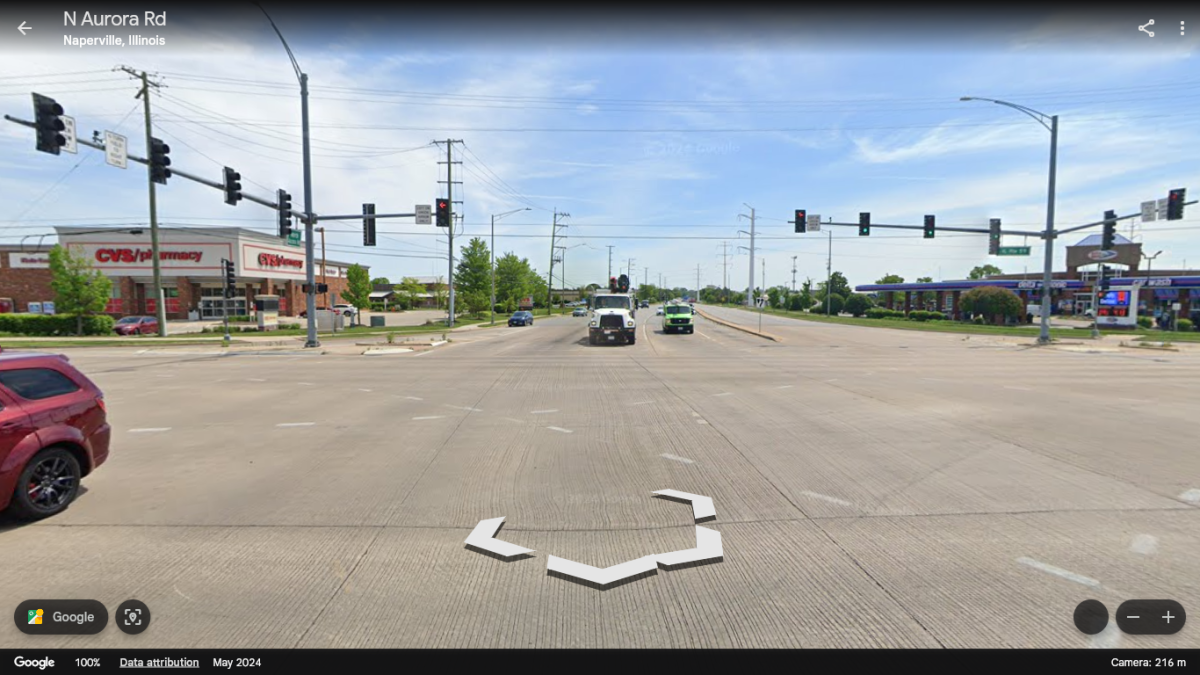
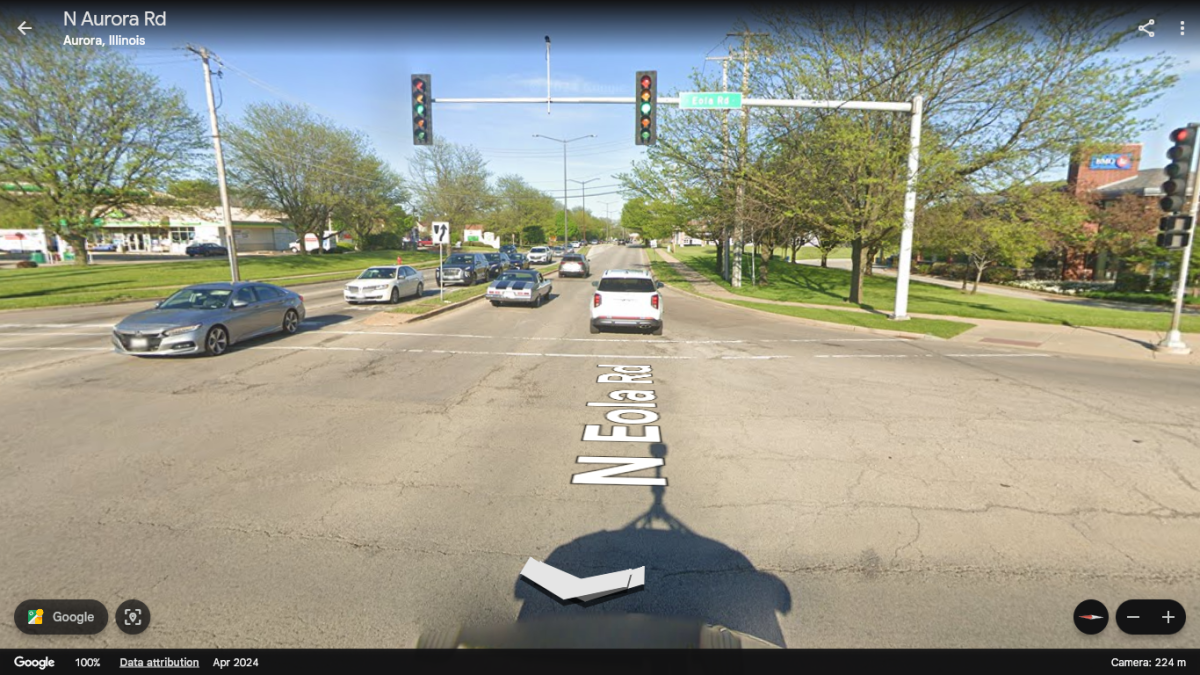
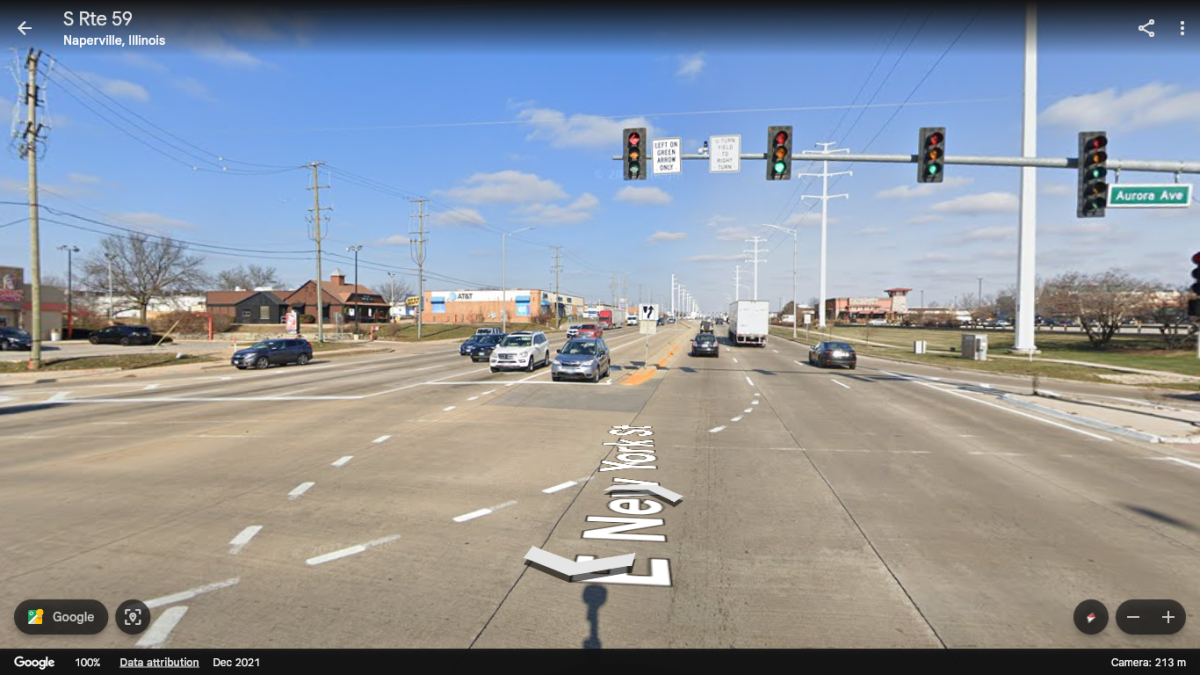

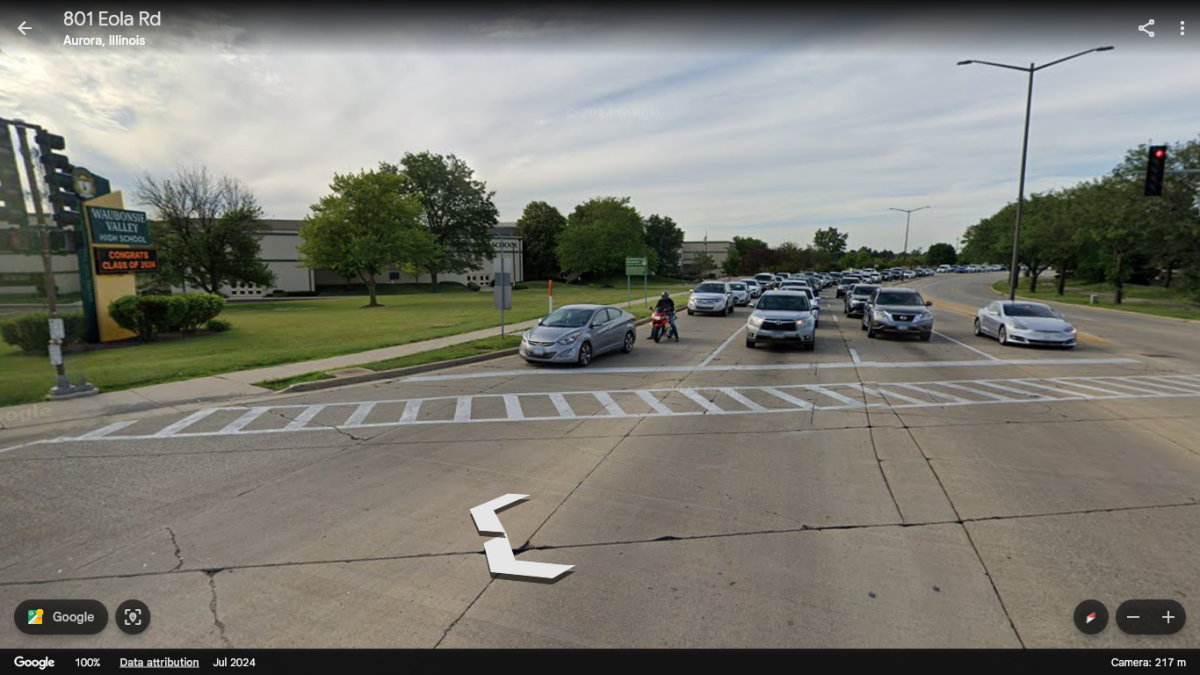
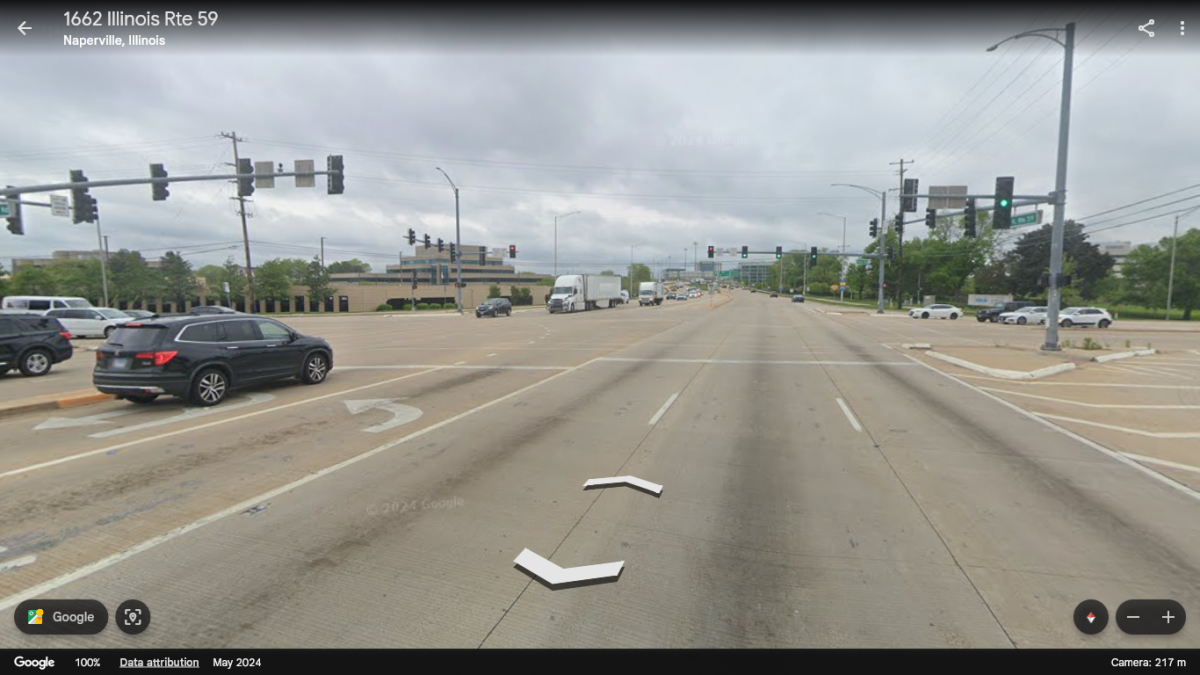
Gray P. • May 20, 2025 at 1:51 pm
This is so interesting and relatable! I walk home so often, and many of these things I didn’t fully consider when it comes to driving. Amazing job! I’m so happy to have been on the cover for this story.
Rusty • May 20, 2025 at 9:18 am
My son has ridden 40 mile bike rides with me, yet the 6 mile bike ride to Metea isn’t remotely safe for even the most experienced cyclists. The location of the school and 59 in general is a travesty. But much love for MVHS. Go Mustangs!